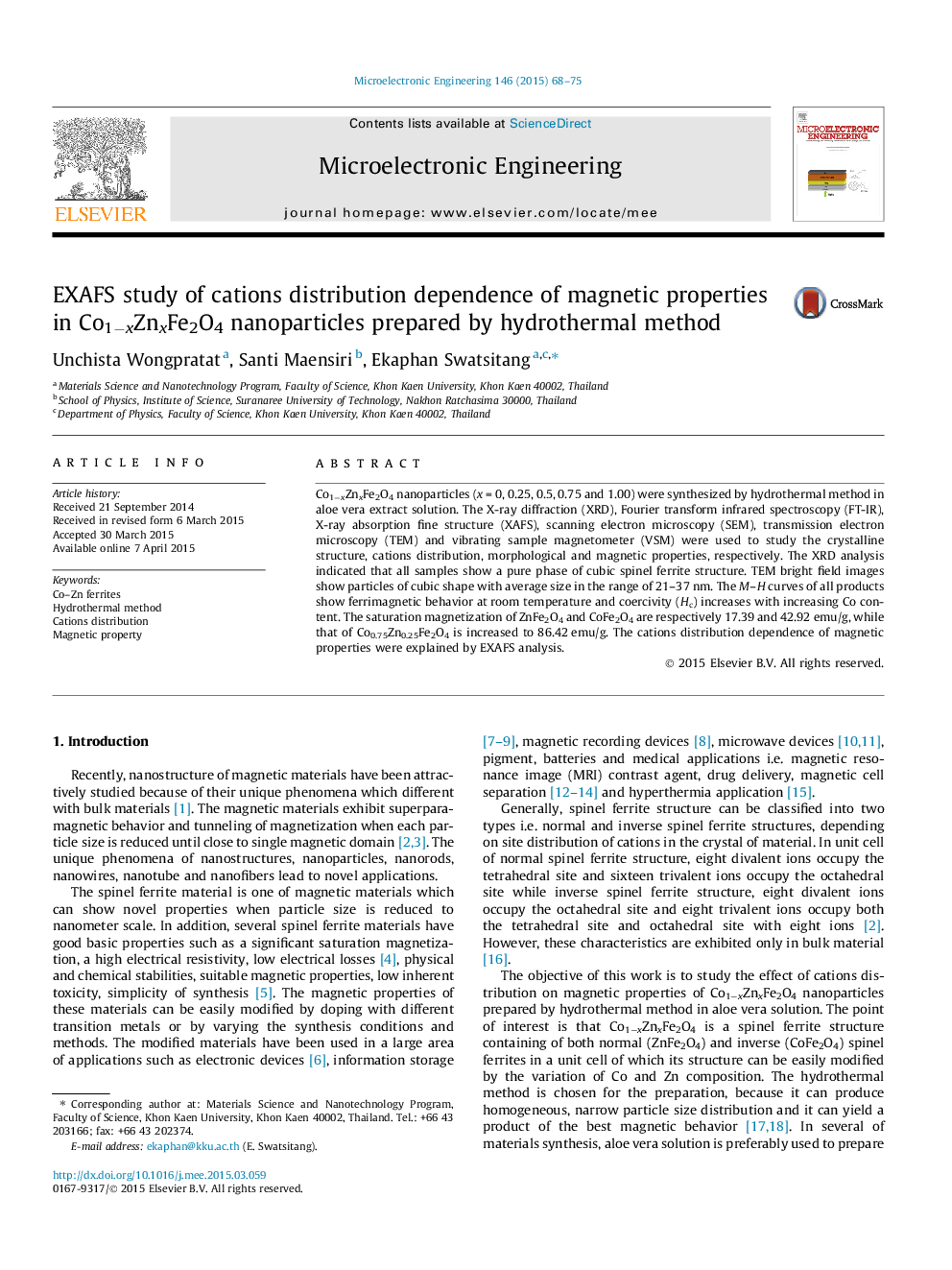| Article ID | Journal | Published Year | Pages | File Type |
|---|---|---|---|---|
| 542051 | Microelectronic Engineering | 2015 | 8 Pages |
•Co1−xZnxFe2O4 nanopowders are prepared by hydrothermal method in aloe vera extract.•EXAFS spectra show the Co and Zn cations distribution in spinel ferrite structure.•Site distribution of cation in the structure strongly affect the magnetic property.•Higher magnetization and coercivity are found in Co1−xZnxFe2O4 nanoparticles.
Co1−xZnxFe2O4 nanoparticles (x = 0, 0.25, 0.5, 0.75 and 1.00) were synthesized by hydrothermal method in aloe vera extract solution. The X-ray diffraction (XRD), Fourier transform infrared spectroscopy (FT-IR), X-ray absorption fine structure (XAFS), scanning electron microscopy (SEM), transmission electron microscopy (TEM) and vibrating sample magnetometer (VSM) were used to study the crystalline structure, cations distribution, morphological and magnetic properties, respectively. The XRD analysis indicated that all samples show a pure phase of cubic spinel ferrite structure. TEM bright field images show particles of cubic shape with average size in the range of 21–37 nm. The M–H curves of all products show ferrimagnetic behavior at room temperature and coercivity (Hc) increases with increasing Co content. The saturation magnetization of ZnFe2O4 and CoFe2O4 are respectively 17.39 and 42.92 emu/g, while that of Co0.75Zn0.25Fe2O4 is increased to 86.42 emu/g. The cations distribution dependence of magnetic properties were explained by EXAFS analysis.
Graphical abstractThis figure shows the M–H curves or hysteresis loops of CoFe2O4, ZnFe2O4 and Co0.75Zn0.25Fe2O4 nanoparticles at room temperature. The results indicate that the saturation magnetization of CoFe2O4, ZnFe2O4 and Co0.75Zn0.25Fe2O4 are 42.85, 17.39 and 86.42 emu/g, respectively. We can conclude that the magnetization can be enhanced by co doping of Co and Zn ions in spinel ferrite structure. The study of site distributions of Co and Zn ions in the spinel ferrite structure are important as it can be used to explain the enhancement of the magnetic properties.Figure optionsDownload full-size imageDownload as PowerPoint slide
